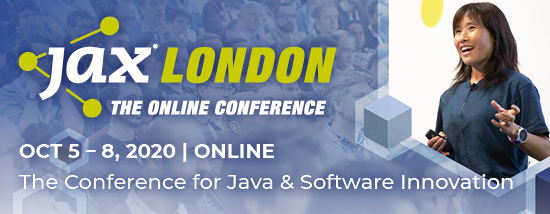Chatbots are getting smarter.
A lot smarter.
Research shows chatbots will reach a 90% customer interaction success rate by 2022 (source).
With adoption accelerated by COVID and a common drive to do more with less, conversational automation has emerged as a staple in modern business.
As with any tech, departments and key thinkers are scrambling to uncover best practices and refine their usage of chatbot technology.
Now, I’m sure we’ve all had our fair share of experiences with a bad chatbot. The kind that responds with the wrong answer, fails to understand you, or keeps moving you round in circles.
Thankfully, these experiences are quickly becoming a thing of the past. With guidance, brands can create incredible chatbot experiences. With a single chatbot capable of autonomously bringing in a huge amount of leads within a few months, mastering this form of AI will provide a huge boost for any business.
Backed by experience overseeing chatbot projects across some of the world’s biggest brands (and helping brands salvage their chatbot mishaps), here are the key mistakes you don’t want to make.
SEE ALSO: “Sonatype Lift was designed to intuitively blend into developer workflows”
You failed to properly plan
Failing to plan is planning to… We all know the quote.
The best chatbot conversations are those that seamlessly guide the user towards an end goal. There are no unnecessary steps and every element has been clearly thought out.
A chatbot experience that has been rushed out, or created without proper planning, is obvious. The steps feel convoluted, the user experience is messy, and it’s easy to get lost or for the chatbot to break.
Chatbot conversations work best when using a pen and paper approach. When every step has been previously sketched out, either on a whiteboard or using a collaboration tool.
As the technology continues to advance, chatbots are growing in capabilities and use cases. Gone are the days of chatbots simply being FAQ machines. As the technology provides more room for complexity and innovation, it requires more time planning.
How to avoid this pitfall: Make use of whiteboards, pens and paper, or collaboration tools. Planning an advanced chatbot has many similarities to that of a strategy meeting, where teams work together to identify the best route forwards.
You ignored branding opportunities
A chatbot is, quite literally, a talking version of a brand. It should represent the brand’s core beliefs, goals, and voice.
For many users, talking to a chatbot might be the only time they actively interact with a brand. When the chatbot does nothing to reinforce the reason they turned to the brand in the first place, it’s a golden opportunity wasted.
While your chatbot will have a single goal it works towards, you can’t afford to miss out on brand-building opportunities. Messages should be crafted to ensure your chatbot stands out from the crowd.
Considering a chatbot provides one of the most interactive mediums to date, it’s astounding how many brands fail to make the most of their chatbot. Creative teams and individuals will be able to find ample room to innovate and craft incredible branding experiences with a chatbot.
Got a quirky, fun B2C brand? There’s likely room to include a few gifs or memes. Serving a more professional B2B audience? Include links to extra learning materials within messages to solidify yourself as thought leaders.

Think of Wendy’s’ (the American fast-food chain) Twitter profile. They made a name for themselves through witty and controversial tweets. How could you help a brand achieve similar reach via a chatbot?
Bonus point, full page chatbots are great for providing an immersive experience. They remove all on-page distractions, leaving a single window for users to engage with. Consider utilising a full page chatbot to build your brand. Not seen a full page chatbot before? Here’s a short video covering all you need to know:
You didn’t delight or excite
While many chatbots exist to assist, such as answering questions and providing information, there’s still room to excite users.
It’s common for businesses to only provide brief text answers but the best chatbots go above and beyond to delight users.
They don’t just answer questions with the bare minimum, they carefully craft messages and include a range of exciting features to ensure they stand out. While taking care to ensure a smooth user experience, it’s easy to create experiences that make users smile or even laugh.
Here are common options chatbot creators often forget are at their fingertips:
- Rich media. Video content is often called the king of all content, why create a chatbot without it? Video content swapped for gifs, images, and PDFs, whatever you feel best suits the situation.
- Exciting integrations. Integrating a chatbot with Spotify, connecting to an employee training platform, or using the conversational nature to make products come ‘alive’ during launch are all innovative examples of chatbot integrations. With a bit of creativity, it’s easy for teams to help businesses reach new heights.
- Enhanced personalisation. Offering birthday discounts via email is no longer good enough. Users expect more. Chatbots can provide the ultimate personalisation experience, serving unique content depending on URLs, time of day, active flash sales, and more. Those that think outside of the box can use a chatbot to smash targets and delight users simultaneously.

You forgot user experience
Chatbots are there, amongst other goals, to make life easier. They ensure customers receive timely assistance, they nurture leads round-the-clock, and they help employees do more with less.
When first working with a chatbot platform, this primary goal can’t be forgotten. Every element of your chatbot should be refined around the idea that it’s easy to use.
Your chatbot should always have user experience at its heart. Here are the most prevalent accessibility pitfalls businesses have fallen into over the years:
- The chatbot sends long, bulky messages
Long walls of text are difficult to read on a screen, especially if you have poor eyesight or a small device. Long or bulky messages damage the user experience, requiring them to put more effort in than needed. Focus on concise messages, something that will come naturally to those with copywriting experience.
- The chatbot uses the wrong medium to convey information
While a picture may paint a thousand words, it might not always be the right option. Many chatbot builders get swept up by the exciting functionality and create experiences that don’t match their purpose.
In the current digital age, speed is key. Chatbot users want to get the information they need as quickly as possible. Providing this information via an inappropriate medium slows the user down, damaging their chatbot experience.
Send videos when a video is best, not just because you can. If a sentence or two gets the job done, then stick with the simple. If it needs more, look into sharing PDFs or web pages directly within the widget.
- You focused on the wrong target market
True for social media campaigns, web design, and logo creation, creating something for the wrong target market is an obvious no-go.
This being said, it’s something we’ve seen fairly often. A combination of exciting features and a new channel can, occasionally, see brands forget the basics. Always keep the end-user at the forefront of chatbot creation.
A great chatbot talks as its users do, shares the information they expect to see, and is on the channels they currently use.
With chatbot adoption rising, so is the available support. We’ve seen digital and marketing agencies start to train their team on chatbots, so they can help strategically advise their clients on how to best wield this powerful form of AI. Need a bit of guidance on how to frame your chatbot? Reach out to the agencies you know and trust, they may already have experience.
How to avoid this pitfall: Follow the ‘as an end-user, does this help me?’ testing process. Test every element of your chatbot and ask ‘as an end-user, does x feature help me as efficiently as it could?’
SEE ALSO: Implementing Docs as Code – Lessons and Benefits
You ‘locked’ users out of speaking to a human
A huge appeal of chatbots for many businesses is their autonomous nature. In many cases, a chatbot enables a business to serve its users without having to lift a finger.
This being said, providing an option for users to reach a human is vital. Failure to do so leaves the user feeling trapped and reflects negatively on their brand. In extreme cases, it can leave the user feeling undervalued and will see them turn elsewhere.
Thankfully, chatbots provide a variety of different human fallback methods.
Chatbot builders can experiment with each method, finding the correct one for the business. On top of this, the different human fallback methods enable the chatbot to grow with the business.
As the business grows, they can implement more advanced methods of human fallback to best serve their users. For the person (or team) behind the chatbot, they get to watch their solution become a staple in the business’s future plans and strategies.
How to avoid this pitfall: Include human fallback methods such as live chat for when a user requires human assistance. If live chat isn’t suitable for your business, you can always include an option for a chatbot to take a message and pass it onto your team.
You let your chatbot become stagnant
By design, chatbots improve over time. AI and machine learning technology see them grow smarter with every message. To put it simply, chatbots grow alongside your business.
The industry is rapidly developing and breakthroughs are being released monthly. Creating your chatbot and then leaving it to sit still, rarely making adjustments or adding new functionality is a huge waste.
Brands that leave their chatbot alone year upon year are quickly left with an outdated product. Imagine a brand that never updated its website. They never added a new blog post, reworded a landing page, or tweaked a call to action. There’s a reason that sounds crazy, it would never happen.
The same should apply to chatbots.
Builders should work to continually improve their chatbot experience. Reviewing data from monthly reports to find new avenues for improvement, implementing new features to delight, and communicating with those that rely on the chatbot to uncover refinements.
A chatbot is an ever-evolving solution that will serve now and for the years to come, don’t let it get rusty.
How to avoid this pitfall: For those looking to create innovative chatbot experiences for a client, check out the ubisend partner programme. The platform was built around regular releases to ensure your chatbot never becomes stagnant.
You made your users come to you
At the risk of repeating the same point, chatbots are all about making life easier. A chatbot’s users shouldn’t have to go out of their way to engage with the chatbot, it should be present on their preferred communication channels.
Choosing the wrong channels will lead to low uptake and slow the growth of your chatbot. Additionally, for those that reach out for help and are directed to the chatbot, having to navigate from your social media to your website provides a poor user experience.
With chatbot platforms supporting social media, websites, and even custom-built apps, there really is no reason to not be where your users already are.
The more agile thinkers will see chatbots as a future-proofing tool. They know their customer base won’t be using today’s channels in a few years’ time. As new channels rise to popularity, a pre-existing chatbot can be ready to dive into the action.
How to avoid this pitfall: Ensure your chatbot platform caters for the channels your users prefer. On top of this, try to find a provider that shows flexibility. With some platforms offering only one channel (such as Facebook Messenger) and others offering over 30, it’s important you choose a provider that will cater for your users today and in the years to come.
Driving results with AI
Chatbots have emerged as kings of modern efficiency. As brands once mastered social, many are now looking to reap the rewards that chatbots can bring.
With guidance, businesses of all sizes will be capable of achieving new heights through automation.
Whether you’re creating a chatbot for your own business, or are adding chatbots to your agency’s list of services, avoiding these pitfalls will springboard your first chatbot build.
For some, the thought of working with AI can sound daunting. Once you strip away the futuristic feel, it quickly becomes another project for you to tackle.
Many of the skills required for creating a chatbot, such as innovative thinking and always putting the user first, tie in with more ‘typical’ tech projects. Those that have worked, whether in the creation or planning stages, on a website build, helped create an app, or brainstormed a social media strategy will be well prepared to create their first chatbot.
If you’re looking to hone your chabot skills check out this free course. It’s a series of seven emails covering the basics of business chatbots.
Remember the users, avoid the pitfalls, reap the rewards.
The post 6 common mistakes agencies make when first deploying chatbots appeared first on JAXenter.
Source : JAXenter






















